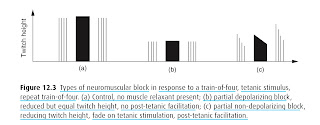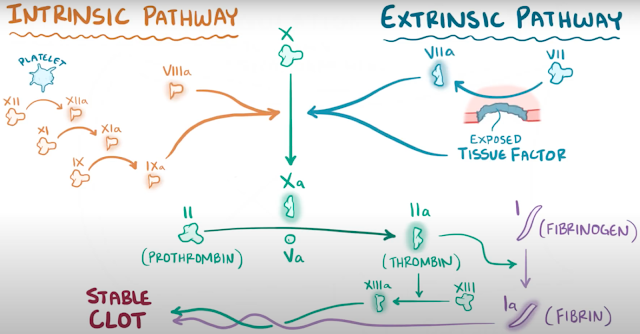Monitoring neuromuscular block

Following stimulation of the relevant nerve. Nerve stimulators must generate a supramaximal stimulus (60–80 mA) to ensure that all the composite nerve fibres are depolarized. Duration 0.1 ms. Negative electrode directly over the nerve. Positive electrode placed where it cannot affect the muscle in question. Five main patterns of stimulation Single twitch stimulation Simplest form Requires a baseline twitch height Reduction in twitch height observed until 75% of NMJ receptors have been occupied by muscle relaxant Only a small number of receptors are required to generate a summated mini end-plate potential, which triggers an action potential Partial NMJ block with depolarizing muscle relaxants (DMRs) and non-depolarizing muscle relaxants (NDMRs) reduce the height of single twitch stimulation. Tetanic stimulation Individual stimuli are applied at a frequency >30 Hz Twitches observed in the muscle become fused into a sustained muscle contraction – tetany Most stimulators deli...
